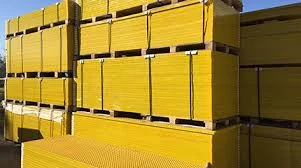
-
 Afrikaans
Afrikaans -
 Albanian
Albanian -
 Amharic
Amharic -
 Arabic
Arabic -
 Armenian
Armenian -
 Azerbaijani
Azerbaijani -
 Basque
Basque -
 Belarusian
Belarusian -
 Bengali
Bengali -
 Bosnian
Bosnian -
 Bulgarian
Bulgarian -
 Catalan
Catalan -
 Cebuano
Cebuano -
 China
China -
 China (Taiwan)
China (Taiwan) -
 Corsican
Corsican -
 Croatian
Croatian -
 Czech
Czech -
 Danish
Danish -
 Dutch
Dutch -
 English
English -
 Esperanto
Esperanto -
 Estonian
Estonian -
 Finnish
Finnish -
 French
French -
 Frisian
Frisian -
 Galician
Galician -
 Georgian
Georgian -
 German
German -
 Greek
Greek -
 Gujarati
Gujarati -
 Haitian Creole
Haitian Creole -
 hausa
hausa -
 hawaiian
hawaiian -
 Hebrew
Hebrew -
 Hindi
Hindi -
 Miao
Miao -
 Hungarian
Hungarian -
 Icelandic
Icelandic -
 igbo
igbo -
 Indonesian
Indonesian -
 irish
irish -
 Italian
Italian -
 Japanese
Japanese -
 Javanese
Javanese -
 Kannada
Kannada -
 kazakh
kazakh -
 Khmer
Khmer -
 Rwandese
Rwandese -
 Korean
Korean -
 Kurdish
Kurdish -
 Kyrgyz
Kyrgyz -
 Lao
Lao -
 Latin
Latin -
 Latvian
Latvian -
 Lithuanian
Lithuanian -
 Luxembourgish
Luxembourgish -
 Macedonian
Macedonian -
 Malgashi
Malgashi -
 Malay
Malay -
 Malayalam
Malayalam -
 Maltese
Maltese -
 Maori
Maori -
 Marathi
Marathi -
 Mongolian
Mongolian -
 Myanmar
Myanmar -
 Nepali
Nepali -
 Norwegian
Norwegian -
 Norwegian
Norwegian -
 Occitan
Occitan -
 Pashto
Pashto -
 Persian
Persian -
 Polish
Polish -
 Portuguese
Portuguese -
 Punjabi
Punjabi -
 Romanian
Romanian -
 Russian
Russian -
 Samoan
Samoan -
 Scottish Gaelic
Scottish Gaelic -
 Serbian
Serbian -
 Sesotho
Sesotho -
 Shona
Shona -
 Sindhi
Sindhi -
 Sinhala
Sinhala -
 Slovak
Slovak -
 Slovenian
Slovenian -
 Somali
Somali -
 Spanish
Spanish -
 Sundanese
Sundanese -
 Swahili
Swahili -
 Swedish
Swedish -
 Tagalog
Tagalog -
 Tajik
Tajik -
 Tamil
Tamil -
 Tatar
Tatar -
 Telugu
Telugu -
 Thai
Thai -
 Turkish
Turkish -
 Turkmen
Turkmen -
 Ukrainian
Ukrainian -
 Urdu
Urdu -
 Uighur
Uighur -
 Uzbek
Uzbek -
 Vietnamese
Vietnamese -
 Welsh
Welsh -
 Bantu
Bantu -
 Yiddish
Yiddish -
 Yoruba
Yoruba -
 Zulu
Zulu
Fiberglass Stack Liner Alternatives - Durable & Cost-Effective Solutions
Exploring Alternative Solutions for Fiberglass Stack Liners
In the realm of industrial applications, particularly in flue gas emission control systems, fiberglass stack liners have long been a staple. Known for their durability, resistance to corrosion, and lightweight nature, these liners have facilitated improved efficiency in various industries, from power generation to waste management. However, with advancements in technology and a growing emphasis on sustainability, there is a rising interest in alternative materials and solutions that can potentially outperform traditional fiberglass stack liners.
Exploring Alternative Solutions for Fiberglass Stack Liners
Another promising alternative is the use of advanced composites, such as carbon fiber-reinforced polymers (CFRP). These composites are renowned for their high strength-to-weight ratio and excellent fatigue resistance, which can extend the lifespan of stack liners significantly. In addition to their mechanical advantages, composite materials can be tailored to enhance chemical resistance, allowing them to stand up to various industrial environments. The versatility of CFRP makes it suitable for customized applications, potentially leading to enhanced operational efficiency.
fiberglass stack liner alternative

Metal liners, particularly those made from stainless steel or specialized alloys, are also gaining traction as an alternative to fiberglass. Stainless steel offers robust corrosion resistance and mechanical strength, making it suitable for applications where temperature and chemical exposure are significant concerns. Metal liners can also be designed for easy installation and maintenance, addressing common issues associated with fiberglass such as brittleness and vulnerability to impact damage. While heavier than fiberglass, advancements in metal manufacturing techniques have led to thinner, lighter options that still maintain integrity under demanding conditions.
Another innovative solution is the development of polymer-based liners that utilize advanced manufacturing processes like 3D printing. These liners can be created with intricate designs that enhance fluid flow and reduce pressure loss in stack systems. Additionally, 3D-printed polymers can be formulated to be environmentally friendly, reducing the overall carbon footprint of the liner production process. This adaptability and sustainability align well with the growing focus on eco-friendly practices in industrial operations.
Moreover, the exploration of bio-based composites, derived from renewable resources, is capturing attention as a viable alternative. These materials can offer competitive mechanical and thermal properties while minimizing reliance on fossil fuels. The integration of biopolymers into stack liner applications not only addresses sustainability concerns but also opens avenues for innovation in material science.
In conclusion, while fiberglass stack liners have played a crucial role in the industry, the emergence of alternative materials presents exciting opportunities for enhanced performance, sustainability, and cost-effectiveness. As industries increasingly prioritize environmental responsibility alongside operational efficiency, the transition to these alternatives is poised to redefine standards for stack liner technologies. Continued research and development will undoubtedly lead to further innovations, ensuring that the future of stack liners meets the evolving demands of modern industrial applications.









